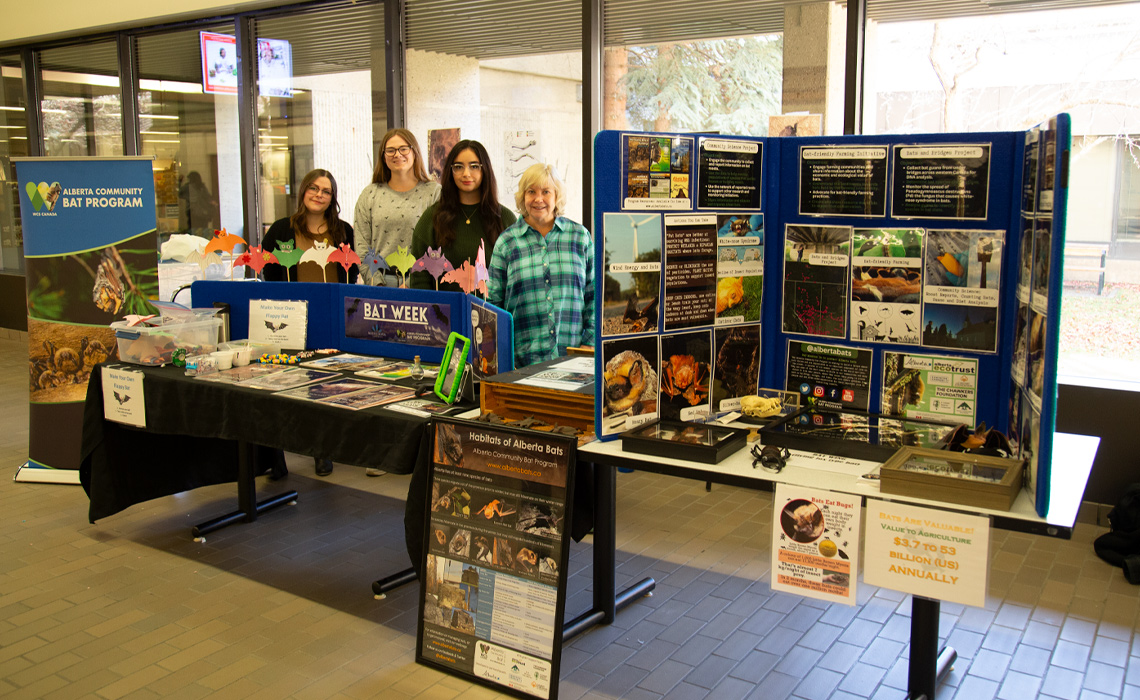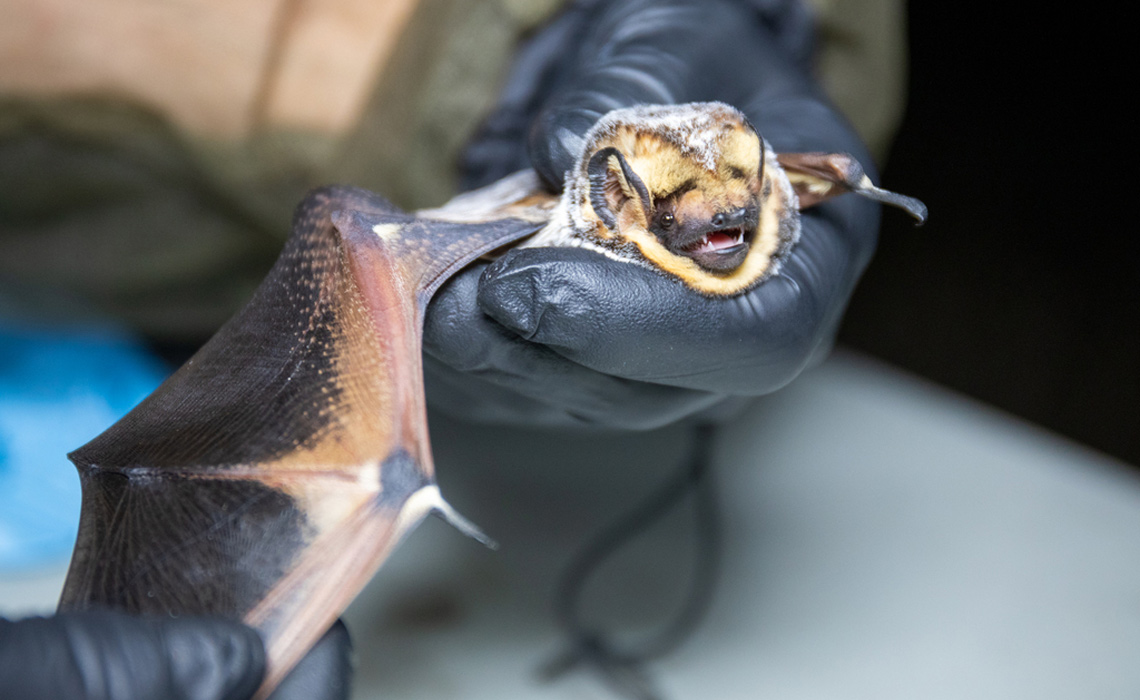Bat Week comes to Main Street

Bats have long been associated with Halloween but did you know that Oct. 24-31 marks International Bat Week? It’s a week to celebrate the flying critters while also raising awareness for bat conservation. You don’t have to go far to learn about the different bats in Alberta and how to be bat friendly, thanks to Dr. Dorothy Hill’s Biology course. Students will have a Bat Booth set up on Main Street between 12:30 and 4:30 p.m. Oct. 29-31.
Biology 3108 – Conservation Biology is a designated Community Service Learning (CSL) course. Dr. Christian Cook, PhD, professor of Human Resources and academic director of the Academic Development Centre, helps coordinate CSL courses on campus. According to her, such courses “entail the gain of academic knowledge, the application of that knowledge in service to a community partner, and the practice of critical reflection to connect the two and deepen the learning experience for a student.”
Cook says that at least 15 per cent of the final grade in the course is dedicated to serving a community partner, with students contributing at least 20 hours to the work. “This does not necessarily mean 20 hours with the community partner but rather in service to the community partner,” she explains, noting that it could be doing research for the community partner or something along those lines.
This semester’s community partner for the course is the Alberta Community Bat Program, part of the Wildlife Conservation Society Canada’s, Western Canada Bat Conservation Program.
Bats are more than just creatures associated with Halloween, they are an important part of our ecosystem. However, they are in trouble according to Susan Holroyd, Conservation and Outreach Coordinator with the Alberta Community Bat Program.
“Two of our nine Alberta species are officially listed as endangered both provincially and federally (due to white-nose syndrome) and another three have been classified as endangered due to effects of wind energy facilities by the federal committee that evaluates the status of Canadian wildlife.” Beyond white-nose syndrome there are many other factors contributing to declines in bat populations, adds Holroyd, including pesticide use and wind turbines.
Hill says given the decline, particularly due to white-nose syndrome, this was a perfect time to partner with Holroyd and the Alberta Community Bat Program. This isn’t the first time the two have worked together, they were both graduate students at the University of Calgary at the same time and have stayed connected since.
For this class specifically, the CSL components have included beta testing training models for the community partner, creating social media posts to support Bat Week outreach, attending a guest lecture with Holroyd, reading recent literature on the decline of bats and running the Bat Booth on Main Street.
The Bat Booth is a display with items and information about the Alberta Community Bat Program including three local stuffed bats, 3D models, photos and more.
Previous community partners for Biology 3108 include the Miistakis Institute, Ann & Sandy Cross Conservation Area, Alberta Invasive Species Council and Legacy Land Trust Society.
More than 50 courses at MRU have a CSL designation. Cook says some of those are also practicums or other forms of credit work experience. “In total, students contribute over 200,000 hours per year to local, national and international communities while learning and applying course concepts. These experiences are often transformational for students, creating deep learning and the opportunity to apply that learning to make it stick.”
CSL courses enrich student learning
For a trio of students, this course has exceeded all expectations.
Taylor Audit, Rachel Jantzen and Kiana Vadiat are all in their third year of the Bachelor of Science – Biology program. In addition to learning a great deal about bats, they all agree that the CSL aspect of the class has been rewarding.
“The CSL components have helped solidify my understanding of how conservation efforts are actually played out in the real world, which is amazing,” says Jantzen.
Vadiat agrees and says the classroom teaching covers theory and the CSL component teaches application. “The CSL component brings a real life example into class that can better help us understand how factors that cause extinction vulnerability emerge and what we can do to help the species affected.”
Holroyd says it is vital to involve students now as they represent the next generation of future conservation efforts. “They will be the researchers, the advocates, the ones who are connected with the issues. An essential part of any education should include the recognition of these roles, and the responsibility graduates have to the environment.”

While Audit, Jantzen and Vadiat still have to finish the rest of the course this semester, they all agree it has been very rewarding so far and has expanded their horizons on future careers.
“I am interested in many different areas of ecology and evolution, but I have always been eager to learn more about bats ever since learning about the impacts of white-nose syndrome on their populations during BIOL 1204. I have been keeping up to date with current treatments and conservation efforts with the goal to conserve and increase population numbers. I hope to contribute to these efforts in the future,” says Audit.
Jantzen says she too has been inspired to look at careers in conservation, especially after hearing from Holroyd. “Having the chance to partner with an organization that is making a difference in the community is amazing on its own, and it also really helps you understand the lecture material in a practical way,” says Jantzen.
Hill says it’s not just the students who benefit from this kind of learning and engagement with the community. “The students now know about this non-profit organization out there in the community. They can look for volunteer opportunities with them and help them out, and it starts to get their brains rolling as to what other conservation organizations are out there in the community that they could volunteer with or even work for.”
Vadiat has always wanted to pursue a career in any animal welfare related field, particularly in veterinary medicine so she says this course has made her even more confident in that choice. She adds that now she is more aware of the possibilities of research opportunities that are being done related to conservation.
While she hasn’t quite finished the course she has declared that it is the best class she has taken so far at MRU. “I am always excited to go to class and the content in the class is something I’m super passionate about as we learn more about conservation.”
